India Pale Ale stands as craft beer’s most beloved and recognizable style, commanding nearly half of all craft beer sales in the United States. This hop forward beer has evolved from a practical solution for British colonial shipping into a diverse family of ales that showcase the artistry of modern brewing techniques.
Whether you’re sipping your first IPA or you’re a seasoned hop enthusiast, understanding this style’s rich history and incredible variety will deepen your appreciation for one of brewing’s greatest success stories. From the hazy, tropical fruit-forward New England IPAs to the crystal-clear, piney West Coast IPAs, this style offers something for every palate.
In this comprehensive guide, we’ll explore everything you need to know about india pale ale ipa, from its fascinating origins during the British Empire to the innovative brewing techniques that create today’s most exciting new beers.
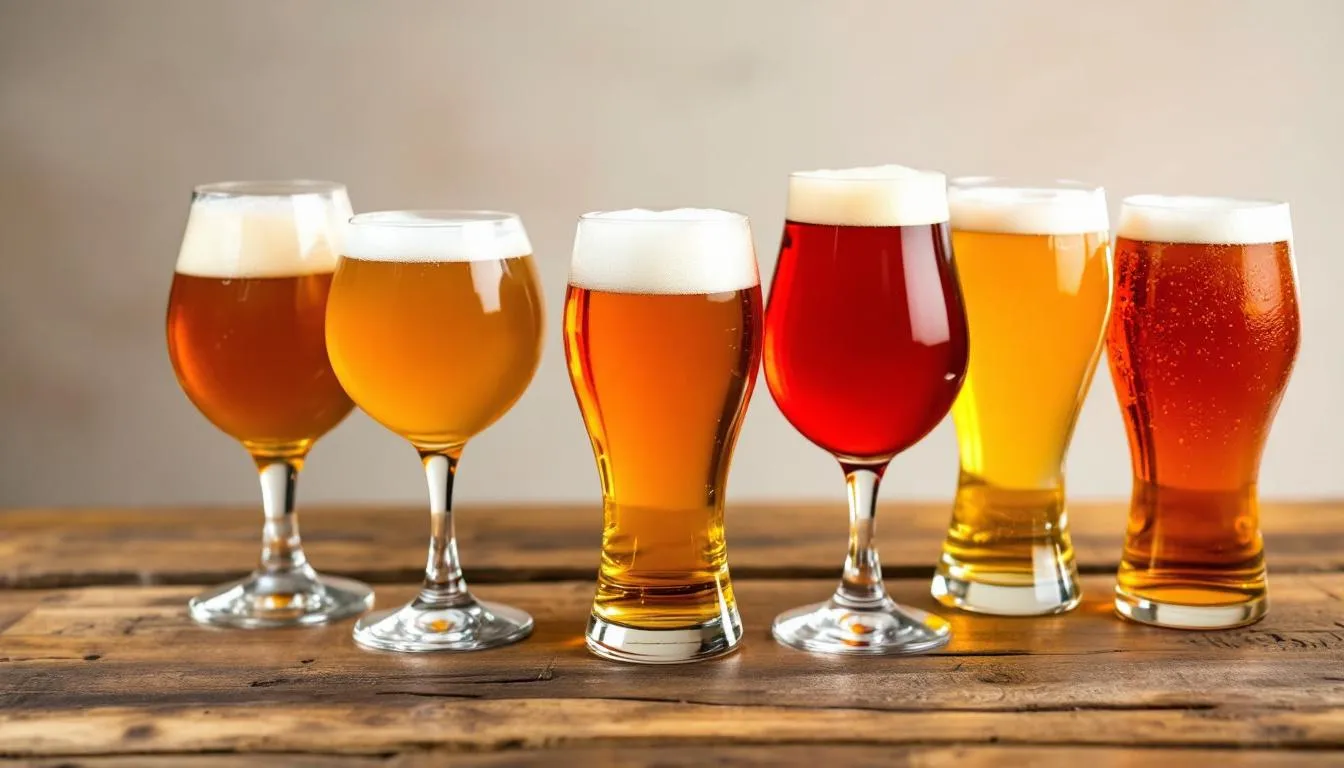
What is India Pale Ale (IPA)?
India Pale Ale (IPA) is a hop-forward beer style characterized by strong hop flavors, aromas, and bitterness that sets it apart from regular beers. This distinctive ale typically contains 5.5-7.5% alcohol by volume (ABV), making it stronger than most standard lagers and regular beer options you’ll find at your local pub or bar.
The defining characteristic of any IPA is its pronounced hop character, which serves as both a natural preservative and flavor enhancer. Unlike other beers that focus on malt sweetness or yeast character, IPAs showcase the complex flavors that hops can provide – from citrus and tropical fruit notes to piney, herbal, and floral aromas.
Modern IPAs range from crystal clear to hazy appearance depending on brewing techniques employed by craft brewers. The style features prominent citrus, pine, floral, and tropical fruit hop notes that can vary dramatically based on hop varieties used and when they’re added during the brewing process.
Key characteristics that define an IPA include:
- Higher alcohol content (typically 5.5-7.5% ABV) compared to pale ales
- Elevated hop bitterness measured in International Bitterness Units (IBUs), often ranging from 40-120
- Complex hop flavor profile featuring citrus, pine, floral, or tropical fruit characteristics
- Golden amber to deep copper color from specialty malt selections
- Dry, clean finish with lingering hop aroma
The beauty of ipa beer lies in its versatility – craft brewers continue pushing boundaries with new hop varieties, brewing techniques, and creative interpretations that keep this style at the forefront of beer innovation.
History and Origins of IPA
The story of India Pale Ale begins in England during the 1780s, when British brewers faced a unique challenge: how to brew beer that could survive long voyages to colonial India without spoiling. The journey from London to Calcutta took 4-6 months, crossing tropical waters where traditional ales, porter, and other beers would spoil or sour in the heat.
George Hodgson of Bow Brewery in London pioneered the solution that would create this legendary style. Understanding that both hops and alcohol act as natural preservative agents, Hodgson began brewing pale ales with extra hops and higher alcohol content specifically designed to survive long voyages. The additional hops not only preserved the beer but also imparted the distinctive bitter and aromatic character that defines IPA today.
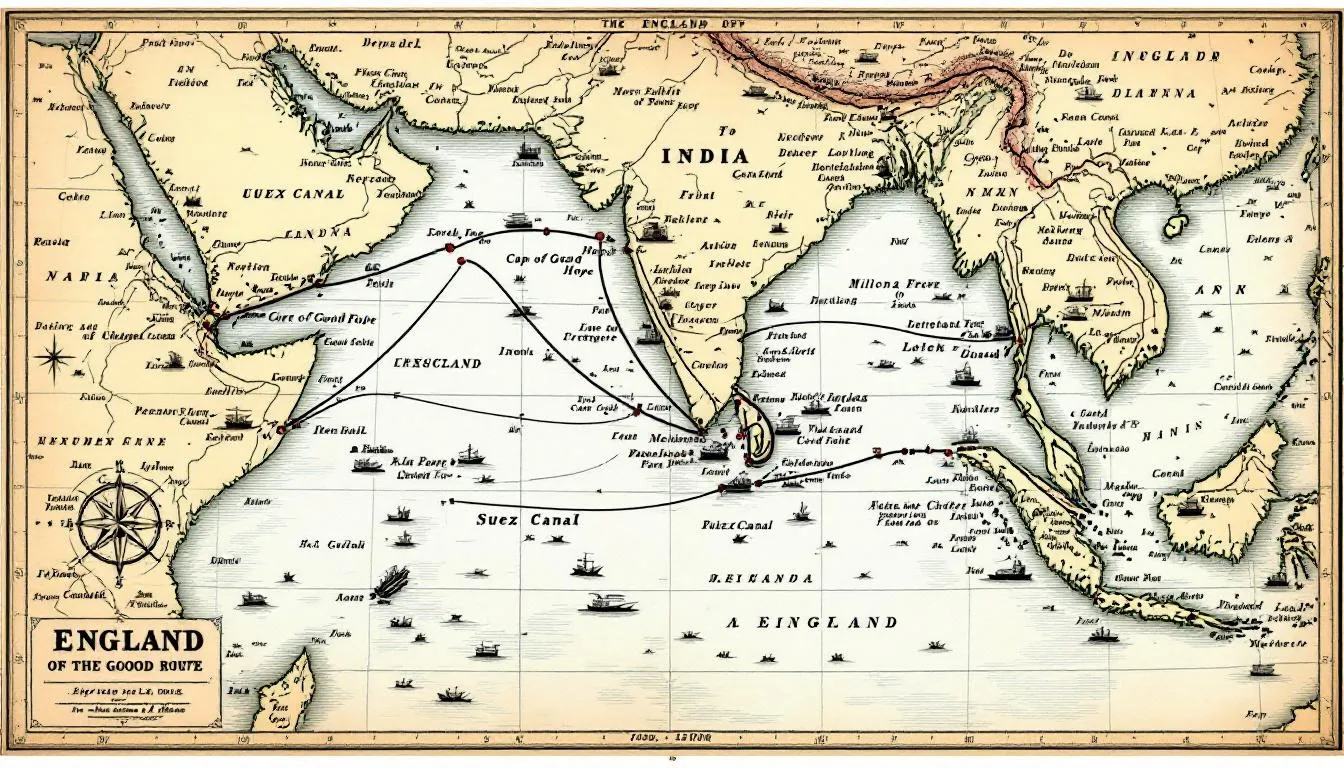
The East India Company initially favored Hodgson’s hoppy ales for their Indian market, but by the 1830s, brewers in Burton upon Trent, including Allsopp and Bass, had improved upon the recipe and dominated the trade. Burton’s mineral-rich water, particularly high in sulfates, enhanced hop bitterness and created the definitive English IPA character.
By 1835, the term “India Pale Ale” appeared in print in the Liverpool Mercury, and by 1840, IPA had become one of England’s best-selling beers. These early England IPAs were often described as having “a vinous nature” – rich, syrupy, and strong enough to compare with wine. Many were aged for years to mellow their assertive character.
The style’s popularity declined in the late 19th and early 20th centuries as lagers gained favor, but IPA experienced a dramatic renaissance during the American craft beer movement of the 1970s-1980s. Anchor Brewing’s Liberty Ale (1975) and Sierra Nevada Pale Ale (1980) sparked renewed interest in hop-forward brewing that would eventually lead to the explosion of american craft beer we see today.
This revival transformed IPA from a historical curiosity into craft beer’s flagship style. By 2023, IPAs represented over 40% of craft beer sales in the USA, making it the most significant single beer style in the modern brewing landscape.
IPA Flavor Profile and Characteristics
The flavor profile of ipa beer is fundamentally defined by its hop character, which can range from intensely bitter and piney to smooth and juicy depending on the hop varieties and brewing techniques employed. Understanding these characteristics helps you appreciate why IPAs have become so popular among craft beer enthusiasts.
Hop bitterness in IPAs typically ranges from 40-120 International Bitterness Units (IBUs), significantly higher than regular beers which usually measure 10-25 IBUs. This bitterness is balanced by the malt backbone, which provides sweetness and body to prevent the beer from becoming harsh or astringent.
Common hop flavors found in IPAs include:
- Citrus notes: Grapefruit, orange zest, lemon, lime
- Stone fruit: Peach, apricot, mango, passion fruit
- Tropical fruit: Pineapple, coconut, papaya, guava
- Herbal elements: Pine needles, herbs, grass, tea
- Floral characteristics: Rose, lavender, jasmine
- Resinous qualities: Pine resin, dank, sticky
The malt backbone in quality IPAs provides essential balance with caramel, bread, honey, or biscuit notes that complement rather than compete with hop flavors. This balance distinguishes well-crafted IPAs from those that rely solely on hop intensity without proper malt support.
Most IPAs finish dry and clean with lingering hop aroma that continues to evolve as you sip. The color ranges from golden amber to deep copper depending on malt selection, with specialty grains adding complexity and visual appeal.
Temperature significantly affects IPA flavor perception. Serve too cold (below 38°F) and hop flavors become muted; serve too warm (above 50°F) and alcohol heat can overwhelm subtle hop nuances. The ideal serving temperature for most IPAs falls between 42-48°F, allowing the full flavor profile to shine in your glass.
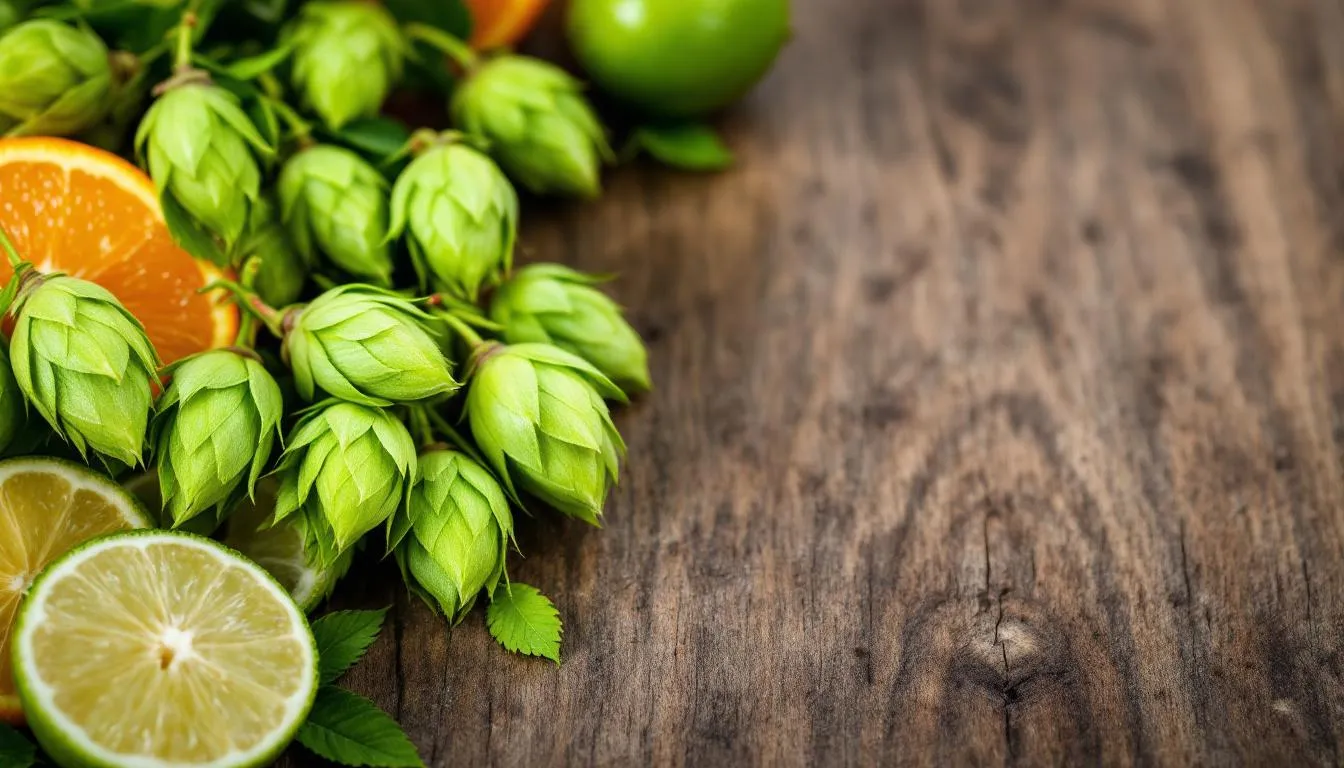
Types of IPA Beer
The India Pale Ale family has evolved into distinct regional and brewing variations, each representing different brewing philosophies and ingredient approaches. Understanding these substyles helps you navigate the diverse world of modern IPA and find the styles that match your taste preferences.
New England IPA (Hazy IPA)
New England IPAs represent a revolutionary approach to hop-forward brewing that emerged in Vermont during the early 2000s. Developed by innovative breweries like The Alchemist (creators of the legendary Heady Topper in 2003) and Hill Farmstead, this style challenged traditional IPA conventions.
The defining characteristic of new england ipas is their cloudy, almost opaque appearance created by wheat proteins and specialized dry hopped techniques. Unlike traditional IPAs that prioritize clarity, hazy IPAs embrace turbidity as a feature rather than a flaw.
These beers typically feature:
- Lower bitterness (20-40 IBUs) compared to other IPA styles
- Intense tropical fruit flavors from late-addition and dry-hopping
- Creamy, almost juice-like mouthfeel
- Hop varieties that emphasize aroma over bitterness
Popular examples include Tree House Julius, Lawson’s Sip of Sunshine, and The Alchemist’s Heady Topper – beers that have achieved cult status among craft beer enthusiasts and inspired countless imitators across the country.
West Coast IPA
West coast ipas represent the aggressive, hop-forward style that defined American craft brewing for decades. Originating with California breweries like Russian River, Stone Brewing, and Green Flash, this style emphasizes crystal-clear appearance and prominent hop bitterness.
Key characteristics include:
- Crystal clear appearance with bright amber color
- Aggressive hop bitterness (50-100 IBUs)
- American hop varieties like Cascade, Centennial, and Chinook
- Dry, crisp finish that showcases hop character
- Pine, citrus, and resinous hop flavors
Classic examples include Russian River Blind Pig, Stone IPA, and Ballast Point Sculpin. These beers established the template that many craft brewers still follow when creating hoppy ales designed to showcase American hop varieties.
English IPA
English ipas maintain the traditional balance and restraint of the original style that sustained British troops in colonial India. These beers use English hop varieties like Fuggle, Goldings, and Target, which provide a more subtle, earthy hop character compared to their American cousins.
Traditional English IPAs feature:
- More balanced malt-to-hop ratio
- Earthy, floral, and herbal hop character
- Moderate alcohol content (4.5-6.5% ABV)
- Golden to amber color with clear appearance
- Biscuity malt flavors that complement rather than hide behind hops
Examples include Fuller’s Bengal Lancer, Samuel Smith’s India Ale, and Greene King IPA. These beers offer a glimpse into brewing history while providing a more approachable introduction to hop-forward beers for those transitioning from lighter ales.
Double/Imperial IPA
Double ipas (also called Imperial IPAs) represent the extreme end of hop-forward brewing, featuring higher alcohol content (8-12% ABV) and intensified hop and malt flavors. This style originated with legendary beers like Russian River’s Pliny the Elder (2000) and Dogfish Head’s 90 Minute IPA.
Creating successful double ipas requires extended brewing time and higher ingredient ratios to achieve proper balance. The increased malt bill necessary to reach higher alcohol levels must be matched with appropriate hop additions to maintain the hop-forward character that defines the style.
Popular examples include:
- Bell’s Hop Slam
- Stone Ruination
- Three Floyds Dreadnaught
- Russian River Pliny the Younger (annual release)
These intense beers demand respect and should be consumed slowly to appreciate their complexity. The higher alcohol content means they pair well with bold foods and can be cellared for extended periods, developing new flavor characteristics over time.
Session IPA
Session IPAs solve a fundamental problem: how to enjoy hop-forward flavor without the higher alcohol content that limits consumption. These beers maintain IPA character while reducing ABV to 3.5-5%, allowing for extended drinking sessions without overwhelming alcohol effects.
Creating successful Session IPAs requires specialized brewing techniques to preserve hop flavor at lower alcohol levels. Brewers often use techniques like late-addition hopping, dry hopping, and specialty malts to maintain flavor intensity despite reduced strength.
Notable examples include:
- Founders All Day IPA
- Lagunitas DayTime
- Stone Go To IPA
- Bell’s Light Hearted Ale
These beers prove that you don’t need high alcohol content to enjoy complex hop flavors, making them perfect for situations where you want to drink responsibly while still enjoying craft beer’s most popular style.
Popular IPA Brands and Breweries
The craft beer revolution has produced countless exceptional IPAs, but certain breweries and specific beers have achieved legendary status among hop enthusiasts. Understanding these benchmark examples helps you appreciate what makes great ipa beer and provides excellent starting points for exploration.
Dogfish Head 60 Minute IPA revolutionized hop usage through continuous hopping – adding hops throughout the entire 60-minute boil rather than at specific intervals. This Delaware brewery’s flagship uses Warrior hops for bittering, Amarillo for flavor, and their signature “mystery hops” for aroma, creating a perfectly balanced 6% ABV beer that showcases innovative brewing techniques.
Sierra Nevada Torpedo Extra IPA demonstrates how specialty equipment can enhance hop character. This California brewery uses a “hop torpedo” – a cylindrical vessel packed with whole-cone hops – to extract maximum aroma without excessive bitterness. Featuring Citra, Crystal, and Magnum hops, this 7.2% ABV beer delivers tropical fruit and citrus flavors that have influenced countless craft brewers.
Bell’s Two Hearted Ale proves that simplicity can create perfection. This Michigan brewery’s flagship uses 100% Centennial hops throughout the brewing process, creating a harmonious 7% ABV beer that consistently ranks among America’s best IPAs. The exclusive use of a single hop variety allows beer enthusiasts to understand how individual hop characteristics can shine when properly showcased.
Russian River Pliny the Elder achieved legendary status as one of America’s first widely acclaimed double ipas. This California brewery’s creation features a complex hop bill including Amarillo, Centennial, CTZ, and Simcoe hops, creating an 8% ABV beer with cult following that often sells out within hours of release.
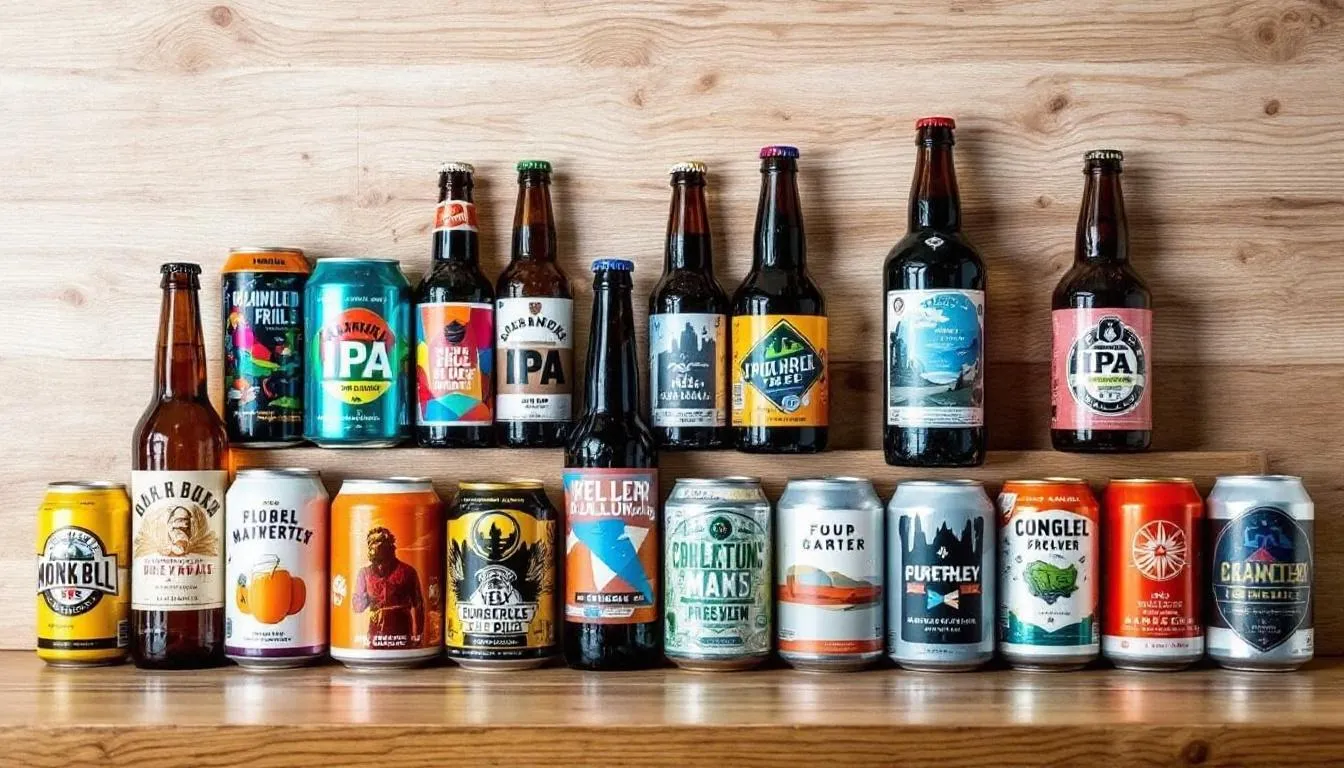
BrewDog Punk IPA represents the Scottish brewery’s flagship offering that helped introduce hop-forward brewing to european markets. This 5.4% ABV beer features tropical fruit notes from new world hops, demonstrating how international craft brewers have embraced and adapted american IPA traditions for global audiences.
Lagunitas IPA exemplifies the California craft beer scene with its bold citrus and pine hop character. This 6.2% ABV beer from Petaluma showcases how consistent quality and wide distribution can build national recognition for regional breweries.
These benchmark beers represent different approaches to hop-forward brewing, from traditional english ipas to innovative american interpretations. Each offers unique insights into how skilled craft brewers balance malt sweetness, hop bitterness, alcohol content, and flavor complexity to create memorable drinking experiences.
When exploring these classics, pay attention to how each brewery approaches hop timing, variety selection, and malt backbone. This comparison helps develop your palate and understanding of what distinguishes exceptional IPAs from ordinary examples of the style.
IPA vs Other Beer Styles
Understanding how ipa beer compares to other beer styles helps you appreciate what makes this hop-forward category unique and guides your exploration of the broader craft beer landscape. Each style offers distinct characteristics that appeal to different taste preferences and drinking occasions.
American Pale Ale shares many ingredients with IPA but offers a more restrained hop character. Pale ales typically feature 30-50 IBUs and 4.5-6% ABV, making them more approachable for those transitioning from lighter beers. While IPAs emphasize hop intensity, pale ales seek balance between malt sweetness and hop bitterness, creating a more sessionable drinking experience.
Lagers represent the opposite brewing philosophy from hop-forward ales. These bottom-fermented beers prioritize clean, crisp flavor profiles that lack hop complexity. Most lagers feature minimal hop character (10-25 IBUs) and focus on showcasing subtle malt flavors and yeast character. Where IPAs celebrate boldness, lagers embrace restraint and refreshment.
Wheat Beers emphasize grain character over hop flavors, using significant wheat additions to create smooth, creamy mouthfeel. These styles typically feature low hop bitterness (10-20 IBUs) and showcase citrus or spice additions rather than hop complexity. The contrast with hoppy ales demonstrates how different grain bills can completely change beer character.
Stouts and Porters focus on roasted malt flavors rather than hop bitterness, creating rich, dark beers with coffee, chocolate, and caramel notes. While some imperial stouts feature significant hop additions, most examples in these styles use hops for balance rather than flavor contribution, opposite to IPA’s hop-forward approach.
Style | ABV Range | IBU Range | Primary Focus | Color |
|---|---|---|---|---|
IPA | 5.5-7.5% | 40-120 | Hop flavor/aroma | Golden-Copper |
Pale Ale | 4.5-6% | 30-50 | Malt/hop balance | Golden-Amber |
Lager | 4-5.5% | 10-25 | Clean, crisp | Pale-Golden |
Wheat Beer | 4.5-5.5% | 10-20 | Grain character | Pale-Cloudy |
Stout | 4-7% | 25-45 | Roasted malt | Dark Brown-Black |
This comparison reveals why IPAs have gained such popularity among craft beer enthusiasts – they offer the most dramatic flavor experiences and greatest variety within a single style category. While other styles excel in specific areas, IPAs provide the broadest canvas for brewing creativity and flavor exploration.
Food Pairings with IPA
The bold, hop-forward character of ipa beer makes it one of the most versatile styles for food pairing, capable of complementing or contrasting with a wide range of flavors. Understanding how hop bitterness, alcohol content, and specific flavor profiles interact with different foods enhances both your dining and drinking experience.
Spicy Cuisines represent ideal partners for hop-forward beers. Thai curry, Mexican food, and Indian dishes work exceptionally well with IPAs because hop bitterness helps cool the palate while the beer’s bold flavors can match intense spice levels. The carbonation in beer also helps cleanse the palate between bites, making each taste as vibrant as the first. For those curious about how darker beer styles compare, learn more about the difference between stout and porter beers.
Try pairing:
- West coast ipas with green chile enchiladas
- New england ipas with Thai green curry
- Session IPAs (check their ABV with this calculator) with spicy wings or jalapeño poppers
Strong Cheeses provide excellent contrast to hop intensity, with rich, creamy textures balancing aggressive bitterness. Aged cheddar, blue cheese, and goat cheese all work well with different IPA styles. The protein and fat in cheese help moderate hop bitterness while the beer’s carbonation cuts through rich textures.
Recommended combinations:
- Double ipas with aged blue cheese
- English ipas with sharp cheddar
- Hazy IPAs with creamy goat cheese
Grilled Meats and Barbecue pair naturally with hoppy ales, especially citrusy west coast ipas that complement smoky, charred flavors. The caramelization from grilling echoes malt sweetness in the beer, while hop bitterness cuts through rich, fatty meats. Beer’s carbonation also helps cleanse the palate after rich bites.
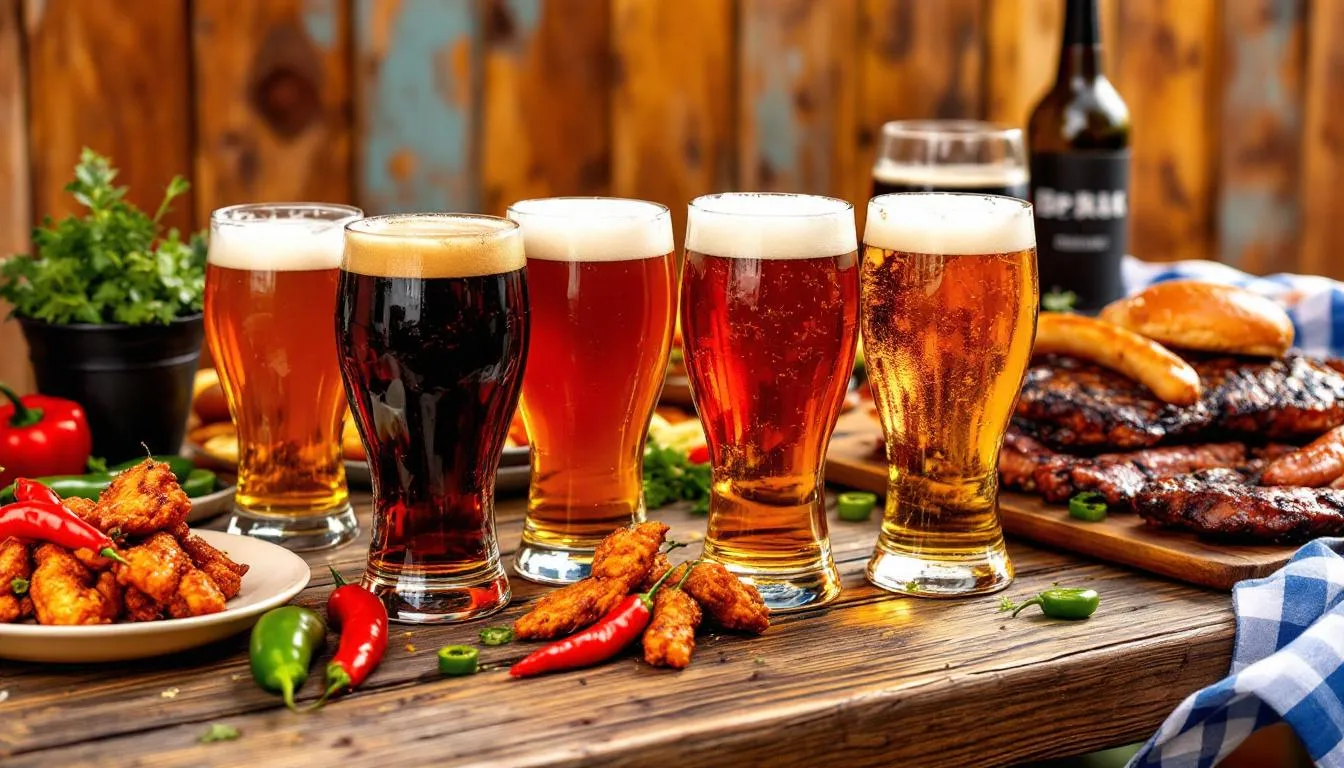
Chocolate Desserts work surprisingly well with double ipas due to their higher alcohol content and malt complexity. The beer’s sweetness complements chocolate while hop bitterness provides interesting contrast. Dark chocolate particularly benefits from this pairing, as its bitterness harmonizes with hop character.
Foods to Avoid include delicate fish dishes, which can be overwhelmed by hop flavors, and creamy desserts that clash with hop bitterness. Light salads and subtle flavors generally don’t provide enough intensity to balance hop-forward beers.
When pairing food with IPAs, consider the specific hop character – citrusy hops work well with Mexican and Thai food, while piney hops complement grilled meats and barbecue. The key is matching intensity levels so neither the food nor beer dominates the pairing.
Brewing Process and Ingredients
Understanding how craft brewers create ipa beer reveals the technical skill and ingredient knowledge required to produce exceptional hop-forward ales. The brewing process for IPAs differs significantly from other beer styles, requiring specialized techniques to maximize hop character while maintaining proper balance.
Base Malts typically include Pale, Maris Otter, or Pilsner malts that provide fermentable sugars while contributing minimal color or flavor. These light-colored malts allow hop character to dominate while providing the sugar foundation necessary for alcohol production. Most IPA recipes use 80-90% base malt to ensure proper fermentation.
Specialty Malts like Crystal 40L, Munich, or Caramel malts add color, flavor complexity, and body to balance hop intensity. These malts contribute caramel, toffee, or biscuit flavors that provide sweetness to counter hop bitterness. Typical specialty malt additions range from 5-15% of the total grain bill.
Hop Additions occur at multiple stages throughout the brewing process, each contributing different characteristics:
- Bittering hops (added at 60 minutes) provide IBUs through alpha acid isomerization
- Flavor hops (15-20 minutes) contribute hop taste without excessive bitterness
- Aroma hops (0-5 minutes) add hop fragrance and essential oils
- Dry hopping post-fermentation maximizes aroma without additional bitterness
Modern brewing techniques like biotransformation allow craft brewers to add hops during active fermentation, creating unique flavor compounds impossible to achieve through traditional methods.
Yeast Selection significantly impacts final beer character. American ale yeast strains ferment at 65-72°F, producing fruity esters that complement hop flavors. Clean-fermenting strains allow hop character to dominate, while more characterful yeasts can add complexity through fermentation byproducts.
Water Chemistry plays a crucial role in hop expression. Burton upon Trent’s mineral-rich water, particularly high sulfate content, enhances hop bitterness and creates the crisp, dry finish associated with classic english ipas. Modern brewers adjust water chemistry to optimize hop character for their intended style.
Key brewing parameters for successful IPAs:
Parameter | Range | Impact |
|---|---|---|
Mash Temperature | 148-152°F | Controls body and fermentability |
Boil Time | 60-90 minutes | Allows hop utilization |
Fermentation Temperature | 65-72°F | Affects yeast character |
Dry Hop Temperature | 60-68°F | Maximizes aroma extraction |
The art of brewing exceptional IPAs lies in balancing these technical elements while showcasing hop varieties’ unique characteristics. Each decision from grain selection to fermentation temperature affects the final beer’s flavor profile, demonstrating why craft brewing requires both scientific knowledge and artistic sensibility.
Successful IPA brewing demands understanding how ingredients interact throughout the process. The goal isn’t simply adding more hops, but using them strategically to create balanced, drinkable beers that showcase hop complexity while remaining approachable to beer enthusiasts of all experience levels.
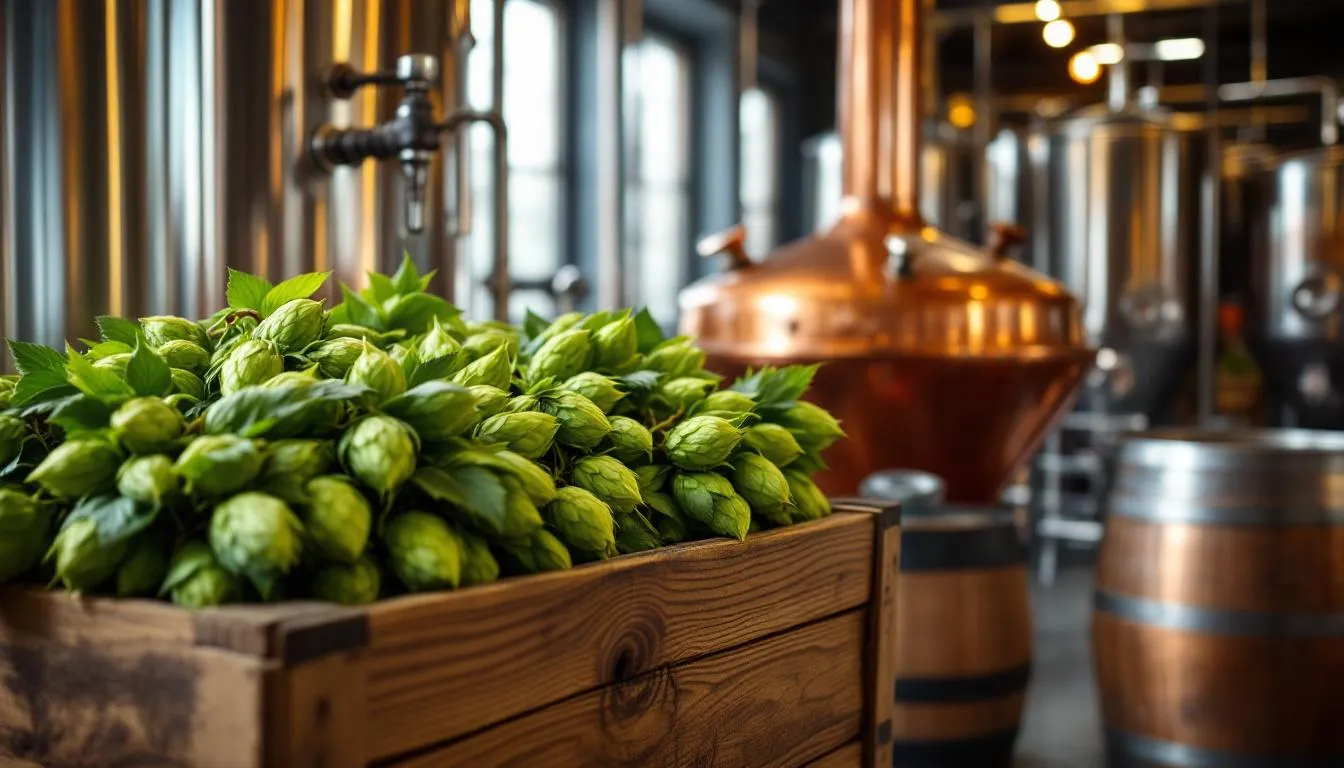
Conclusion
India Pale Ale has evolved from a practical solution for colonial shipping into craft beer’s most dynamic and innovative style. From its origins in British breweries serving the East India Company to today’s experimental craft brewers pushing flavor boundaries, IPA represents the perfect intersection of brewing tradition and creative innovation.
Whether you prefer the balanced, earthy character of traditional english ipas, the bold citrus intensity of west coast ipas, or the juicy tropical fruit flavors of new england ipas, this style offers endless opportunities for exploration. The diversity within the IPA family ensures that every beer enthusiast can find examples that match their taste preferences while discovering new flavor combinations.
As you explore the world of hoppy ales, remember that each glass represents centuries of brewing evolution and countless hours of craft brewer experimentation. From the first extra hops added to survive long voyages to modern biotransformation techniques creating unprecedented flavor compounds, IPA continues to push the boundaries of what beer can be.
The next time you visit your local pub, bar, or restaurant, take a moment to appreciate the complexity in your pint. Whether you’re enjoying a session IPA during october beer festivities or savoring a double ipa with food, you’re participating in one of brewing’s greatest success stories.
Remember to always drink responsibly and explore the incredible variety that modern craft brewers have created within this legendary beer style. The world of ipa beer offers lifelong learning opportunities for anyone willing to taste, compare, and appreciate the artistry behind each brew.

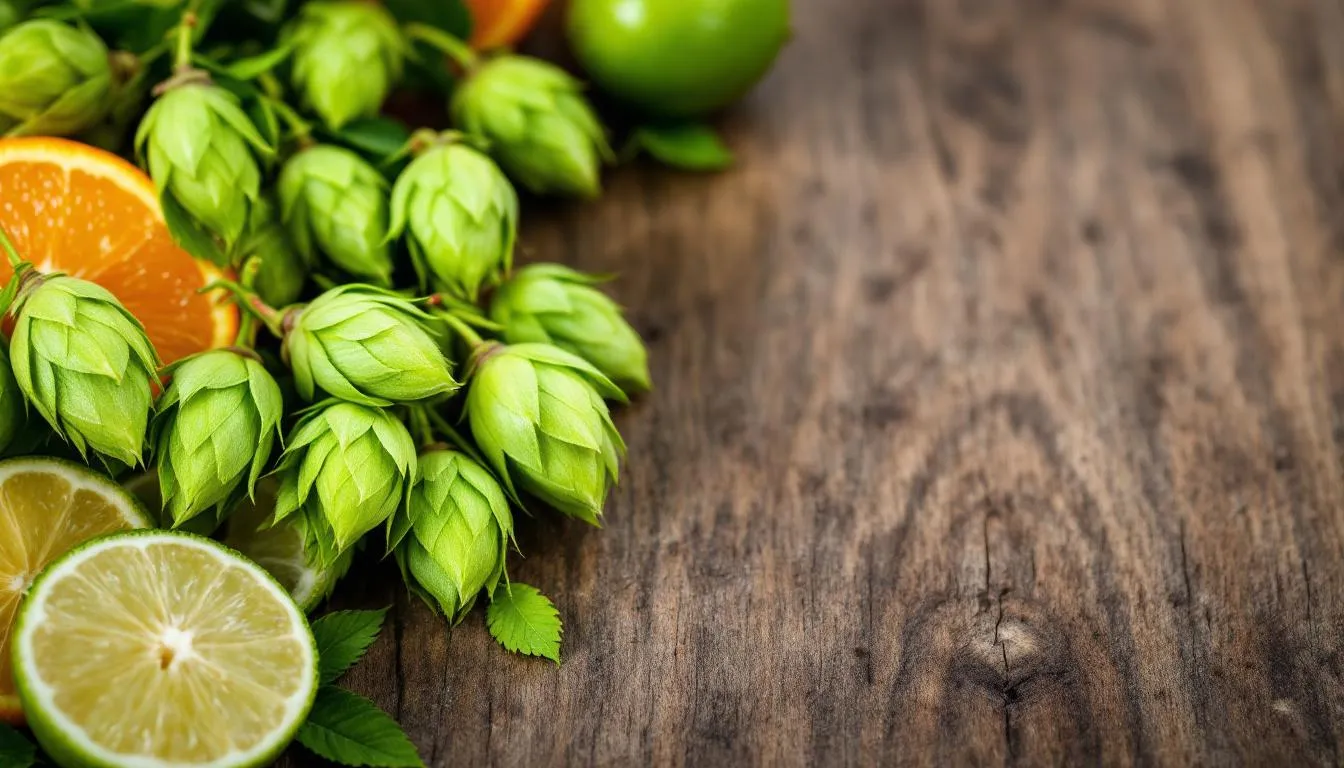
Leave a Reply